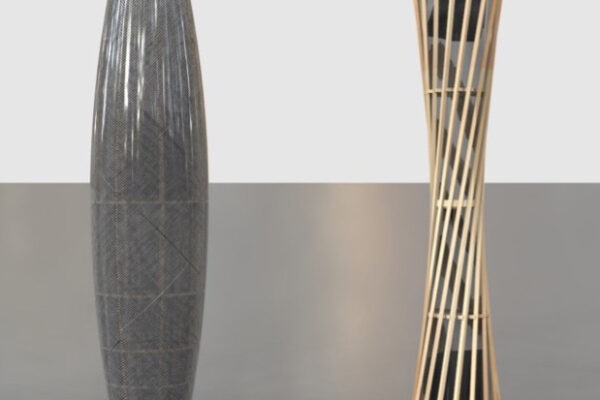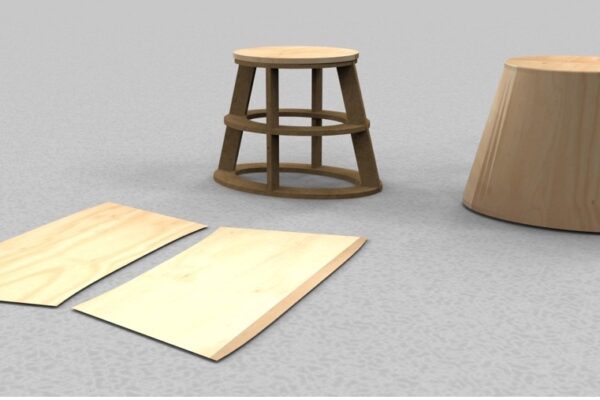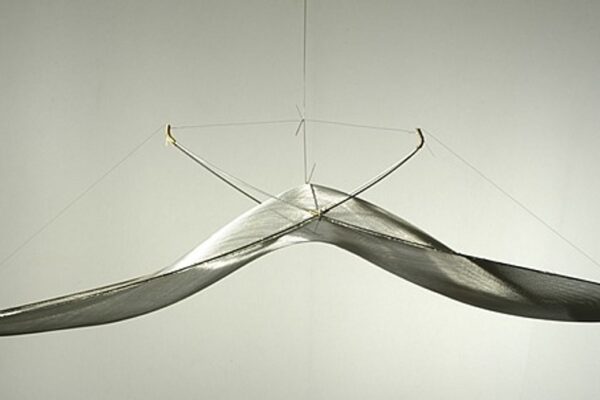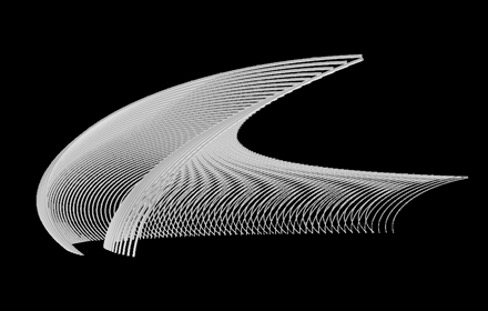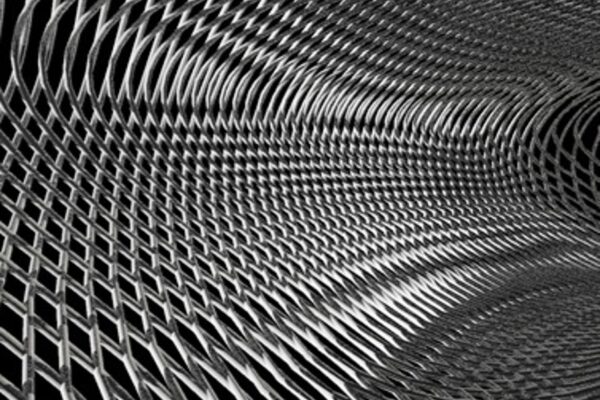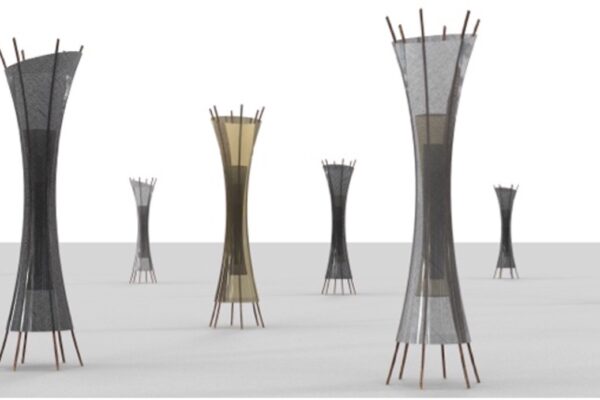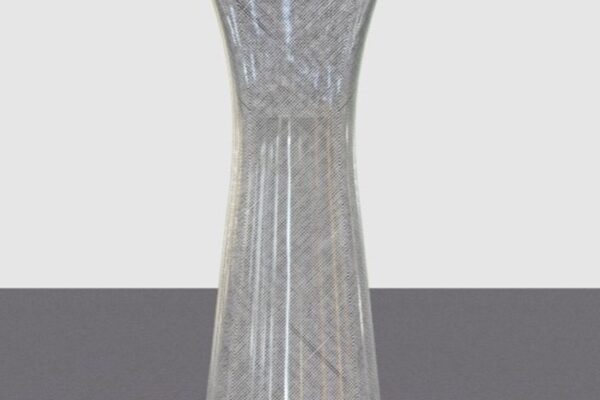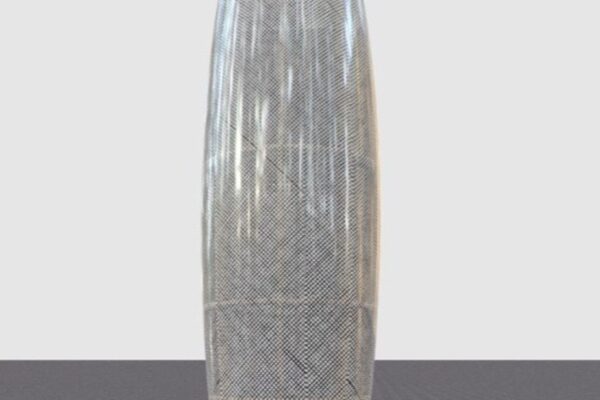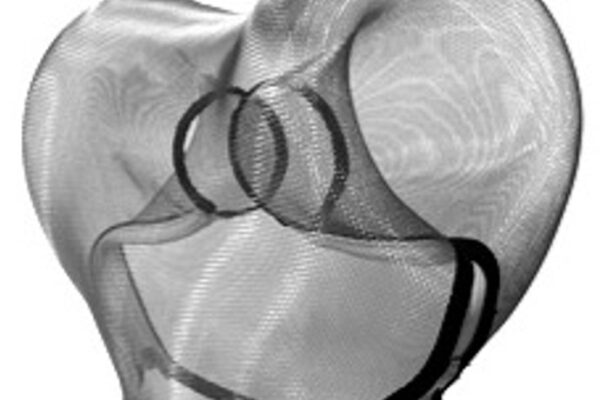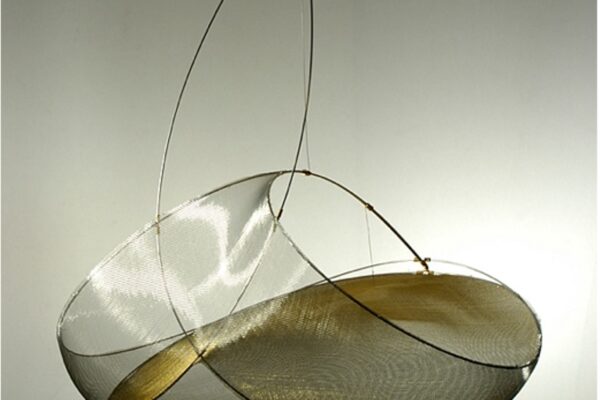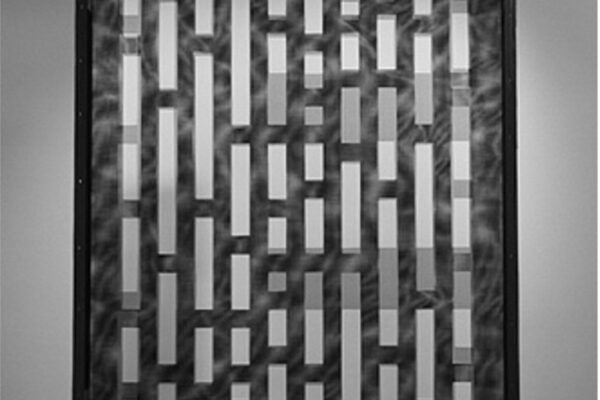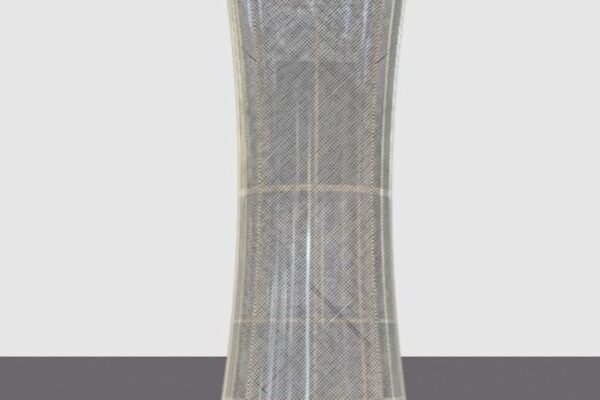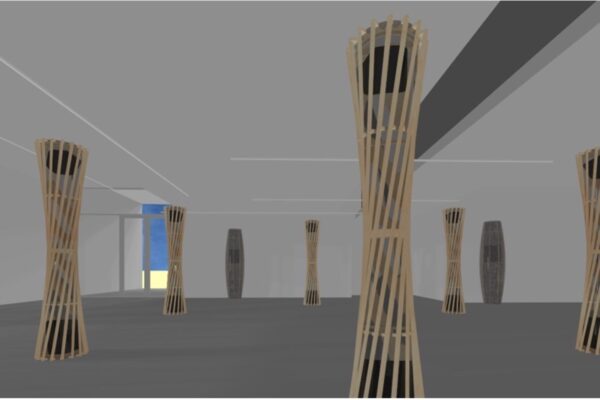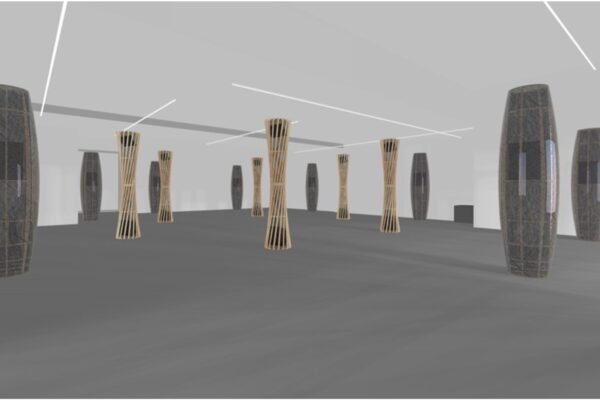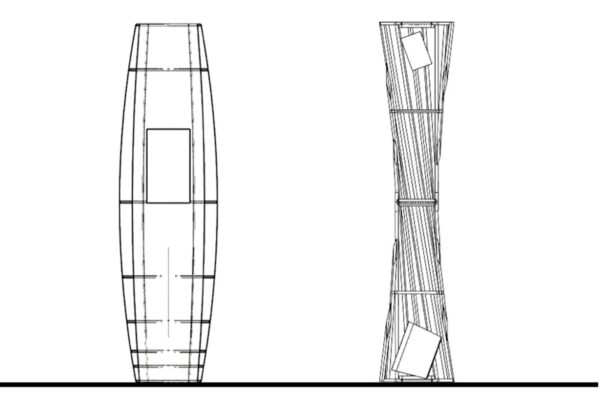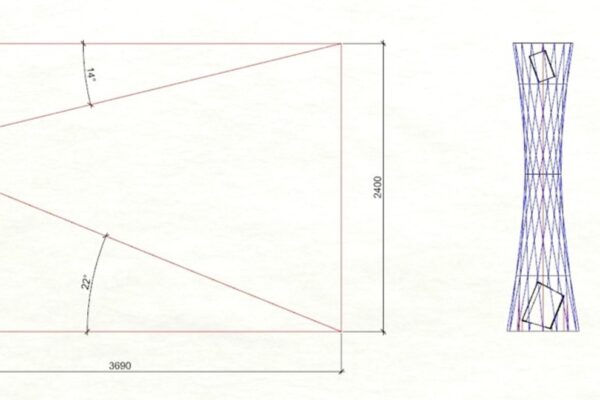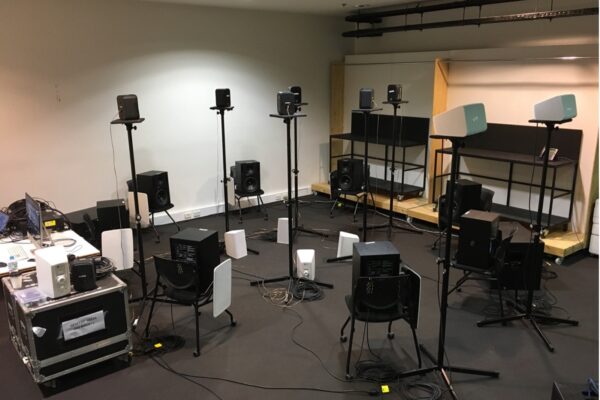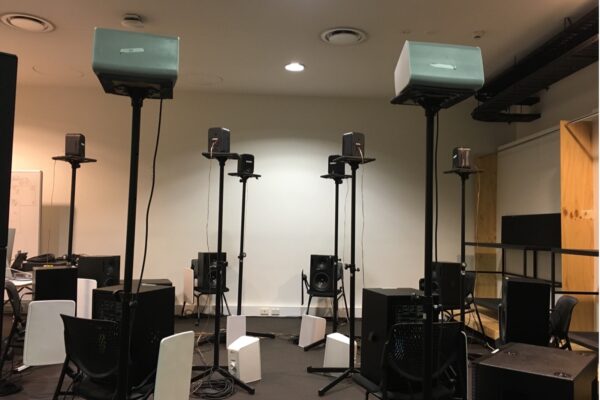Sonic Environments Rapid Prototyping Integrated Control Operator
Traditional approaches to sound in exhibition spaces default to ceiling and wall mounted speakers. This practice removes the immersive potential of speaker arrays and reduces the creative opportunity of spatial sound designers. The challenge of the project was to address the sonic limitations of peripherally located loudspeakers while creating a language of sculptural form that is aesthetically strong, acoustically transparent, demountable and reconfigurable. Ultimately, the solution had to act as a flexible sonic exhibition design tool that supports the prototyping and delivery of sonic art works in a range of simple and complex audio formats. SERPICO first appeared in SITE and SOUND: sonic art as ecological practice at McClelland Sculpture Park and Gallery, Langwarrin Victoria, Australia (2 December 2020 to 2 May 2021). The exhibition was curated by Simon Lawrie, Lawrence Harvey and Jon Buckingham.
Question and Aims of the Project
What is the design solution providing curators and exhibition designers a flexible approach to sound-listener relationships using non-traditional loudspeaker configurations?
The aim of the project was to create a spatial sound exhibition design that inspired audiences to sit, walk, pause and listen to sonic art in a gallery. The design should also allow a curator flexible configurations, be affordable and portable. The project scope included a very modest budget, and small time window for construction Flexibility was required for this design as; a) sonic artworks for the exhibition were in multiple audio formats (stereo to 16 channels) and b) requirement that final speaker locations be resolved in the space which wasn’t accessible for the 6 months prior to exhibition. Due to COVID restrictions in Melbourne across 2020, the project was developed online through collaborative co-design exercises between Mcleod, Harvey and Maisch. They developed digital 3D prototypes of the speaker enclosures inside an interactive model of the gallery to create a series of source-listener scenarios leading to the final integration of cube, planar quadrophonic and octophonic arrangements used in the final exhibition at McClelland Sculpture Park and Galleries.
Form and texture research
The system’s three dimensional structures employ innovative approaches to providing flexible and acoustically transparent speaker housings. Using the archetypal geometries found in the nature and echoing them with the geometries of sound based cymatic patterns the system creates a sonic grove. Tree, seed and cell-like forms congregate together, providing structural support for speakers and offering places to sit and reflect.
In the Queen forms the use of hyperboloid geometry produces a structurally strong and visually engaging solution that allows the speakers to be angled in all directions. In the King forms the seed like structure are clad in multiple layers of stretch fabric mesh that produce a cocoon of moire interference patterns. Arranged with a gallery space the forms contrast and complement each other. The Pawn seating elements act like small islands, placed to invite different visual-aural experience perspectives. Each location creates a different visual-sonic vista.
Critical parameters for sonic immersion
After working on two large VR sound designs in the early 2000’s Harvey developed a spatial sound composition approach using eight zones of auditory space around a listener (see Figure 5). The diagram indicates zone limits that might be used for upper and lower and boundaries of envelopes controlling panning, or a stochastic process selecting a discrete panning location. These locations tended to be maximally separated, particularly along the front-rear (Zones 1 – 2 and 7 – 8), diagonal (Zone 3) and lateral axis (Zone 5). Placing entries of sounds in Zone 1 and 8 can blur spatial qualities of the sound, as listeners may confuse the location of sounds in these zones.
For a stronger sense of left-right separation, placing sounds between ten degrees and ninety degrees (or –10 and –90 degrees) to the listener’s central location (Zones 2 – 5) will give a clearer spatial location to the sound. At ninety degrees to the head on the extreme lateral axis, sounds are unequivocally locatable. In addition to being on the ‘border’ between the front and rear, the types and timing of sound events in Zone 5 are also critical to creating a sense of spaciousness and envelopment (Griesinger, 1996).
Zone 6 is also ambiguous as the sound might appear to be appearing and receding into our forward facing attention, and can be used to compositional effects of anticipation or ambiguity. To give a strong sense of a sound being on the side to the rear of a listener requires that it be between +/– 100 and +/– 135 degrees (Zone 6). These measures can only be a guide as the physical and technological listening conditions of most spaces are compromised so that the boundaries are relative. One must be mindful however, that use of these locations is for creative purposes, not perceptual testing in laboratory conditions.
In summary – the conditions for sonic immersion start with careful location and orientation of source positions (loudspeaker location). In general there are two types of cultural listening scenarios: fixed and dynamic. Scenarios where the receiver locations and orientation (forward facing seats for listeners) are fixed include game consoles, media units in lounge rooms, cinemas or concert halls. Acoustic signals from live instruments or electroacoustic material from loudspeakers can be precisely targeted at known locations where the listeners’ head orientation is toward the screen or stage. Dynamic scenarios are much less discussed but include urban and gallery installations and museum exhibitions (Harvey, 2013). These are complex scenarios where listeners might be static or mobile, and orientated in different directions.
SERPICO addressed the mobile scenario by creating a stable sound field with intersecting spatial types – planes, cubes, rings. Sonic point sources (loudspeakers) are enclosed in sculptural objects themselves creating a grove like place reminiscent of the sculptural park surrounding the gallery.
Final project
The system extends the practice of exhibition design by using sound as an integrative, cohering sensory component of visitor experiences within exhibition spaces, indoor public spaces, schools and other education settings. Through its integration of structural components with standard loudspeaker cabinets, it enables unique spatial listening experiences while maintaining a visual connection to the surrounds. It allows interlocking virtual sound fields (planes, cubes and rings) to be created, through which a listener can walk and sit. It is highly portable and suitable for rapid prototyping of spatial sound designs, or to deliver extended exhibitions using non-traditional speaker configurations.
For a video walkthrough of the exhibition, please click here.
Design Team:
Ross Mcleod, lead designer; Lawrence Harvey, spatial sound design; Simon Maisch, technical sound implementation
2019 & ongoing
Figure 1: image on the left, two SERPICO renders of final forms used for the King (left) and Queen (right). The pawn for seating is shown in image on the right.
Figure 2: exploration of moire patterns and forms. Images by Ross Mcleod.
Figure 3: early form exploration. Images by Ross Mcleod.
Figure 4: Renders of final form in 3D model of Murdoch McClelland Gallery

Figure 5: auditory zone around a central listening location. The number boxes in this diagram are discussed in the ‘critical parameters for sonic immersion’ paragraph.
Figure 6: experimenting with speaker locations and angles. Images by Ross Mcleod.
Figure 7: preparing scaled down version of the exhibition to check audio signal paths and spatialisation trajectories.
References
